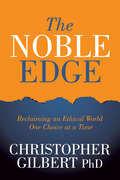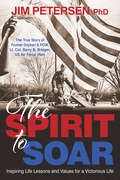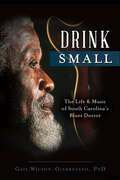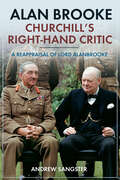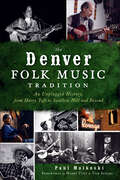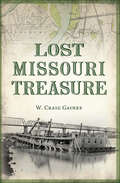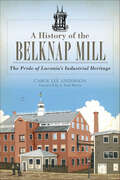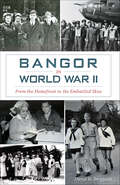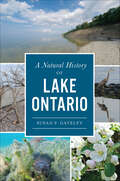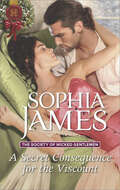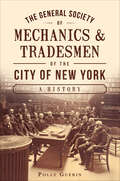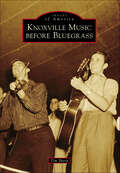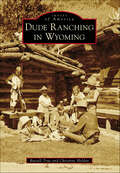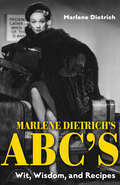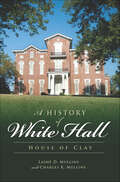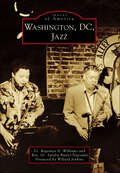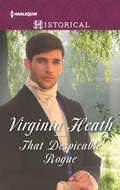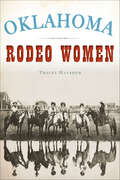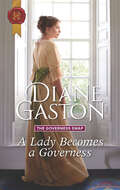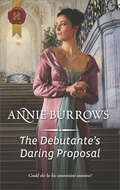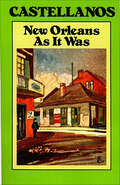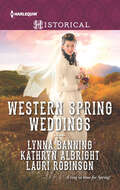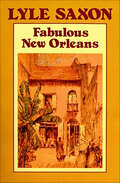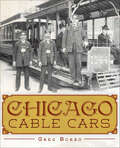- Table View
- List View
The Noble Edge: Reclaiming an Ethical World One Choice at a Time
by Christopher GilbertThe award-winning guide to developing ethics, trust, and authenticity in business and life—and achieving results that matter. Being trusted is the foundation of our greatest personal freedoms. In a time of deepening divisions and &“alternative facts,&” trust and authenticity grow more precious by the hour. The Noble Edge: Reclaiming an Ethical World One Choice at a Time provides an inspirational conversation spiced with personal stories, humorous anecdotes, and invaluable guidance about making consistently good choices. Based on three research-proven steps and nine principles for leading an ethically driven life, The Noble Edge brings a fresh approach to personal growth and inspires real change to empower a brighter future. As useful in the boardroom as the family room, this easy-to-follow book contains a powerful model that sharpens the ethical lens and empowers readers to examine their own standards and values and resist pressures to ignore what is right in favor of what passes for &“success.&” For those who want truth in their decisions, authenticity in their relationships, and solid ground for making tough choices in business and in life, this is an encouraging guide to achieving moral progress individually and collectively, and bringing better ethics into organizations, families, communities, and the world. Winner of the Paris Book Festival Award, NABE Pinnacle Book Achievement Award, International Impact Book Award, Literary Titan Book Award, Firebird Book Awards in three categories, NYC Big Book Award, Canadian Book Club Award and Hollywood Book Festival Runner-up &“Offers the wisdom of the ages in a style that is deep yet easy to understand.&” —Trip Barthel, author of Transforming Conflict into Consensus
The Spirit to Soar: Inspiring Life Lessons and Values for a Victorious Life
by Jim PetersenOn January 23rd, 1967, Lt. Colonel Barry Bridger and his copilot, Dave Grey, launched a mission over Vietnam in their Phantom F-4 fighter jet in treacherous weather. It was Colonel Bridger’s 75th mission and the only one he had attempted in the daylight hours. Suddenly, his plane was split in half by a ground-to-air missile. He and Grey ejected while the plane was going 600 miles per hour and began their descent into the unknown below. When Bridger finally landed on terra firma, he found the North Vietnamese army waiting for him. They arrested him and Grey and checked them into The Hanoi Hilton: a place designed to break the spirit of all who entered. Lt. Colonel Bridger not only survived this horrific ordeal; he thrived. He says his deeply held values saved him and his fellow prisoners. Are your values compelling enough and ingrained deeply enough to sustain you through a situation in which, like Barry, you are captured by a savage enemy and subjected to years of torture? Are your values such that you can make it through the inevitable tough times we all face periodically that make it hard to continue? The Spirit to Soar is filled with valuable life lessons about how to thrive and how to use every experience to help you successfully face the next one.
Drink Small: The Life & Music of South Carolina's Blues Doctor (Music Ser.)
by Gail Wilson-Giarratano PhDFor fans of the blues, Drink Small is synonymous with South Carolina. Drink rose from the cotton fields of Bishopville to become a music legend in the Palmetto State and beyond. The self-taught guitarist has written hundreds of songs and recorded dozens of albums spanning the genres of country, blues, folk, gospel and shag. The success of that music allowed him countless honors, such as playing the stages of the Apollo and Howard Theaters, touring with legendary R&B singer Sam Cooke and playing the best blues festivals in the world. He even developed his own philosophy: Drinkism. Author Gail Wilson-Giarratano details the dream, the music and the life that created the Blues Doctor.
Alan Brooke—Churchill's Right-Hand Critic: A Reappraisal of Lord Alanbrooke
by Andrew SangsterThis new biography of Churchill&’s top WWII advisor is &“an excellent book for anyone interested in military leadership&” (The NYMAS Review). Voted the greatest Briton of the twentieth century, Winston Churchill has long been credited with almost single-handedly leading his country to victory in World War II. But without Alan Brooke, a skilled tactician, at his side the outcome might well have been disastrous. Brooke, Chief of the Imperial General Staff, more often than not served as a brake on some of Churchill&’s more impetuous ideas. However, while Brooke&’s diaries reveal his fury with some of Churchill&’s decisions, they also reveal his respect and admiration for the wartime prime minister. In return Churchill must surely have considered Brooke one of his most difficult subordinates—but later wrote that he was &“fearless, formidable, articulate, and in the end convincing.&” As CIGS, Brooke was integral to coordination between the Allied forces, and so had to wrestle with the cultural strategy clash between the British and Americans. Comments in his diaries offer up his opinions of both his British and American military colleagues—his negative assessments of Mountbatten&’s ability, and acerbic comments on the difficult character of de Gaulle and the weaknesses of Eisenhower. Conversely, he was clearly overindulgent in the face of Montgomery&’s foibles. Brooke was often seen as a stern and humorless figure, but a study of his private life reveals a little-seen lighter side, a lifelong passion for birdwatching, and abiding love for his family. The two tragedies that befell his immediate family were a critical influence on his life. Andrew Sangster completes this new biography with a survey of the way various historians have assessed Brooke, explaining how he has lapsed into seeming obscurity in the years since his crucial part in the Allied victory in World War II.
The Denver Folk Music Tradition: An Unplugged History, from Harry Tuft to Swallow Hill and Beyond
by Paul MalkoskiIn 1962, Harry Tuft founded the Denver Folklore Center to bring together contemporary folk music fans and performers such as Joan Baez, Pete Seeger, Judy Collins and so many more. In the following decade, a core of folk enthusiasts established the Swallow Hill Music Association.These two organizations have persevered to sustain a lasting folk legacy in the Mile High City. This is the story of how the music and the people who love and live it shaped a unique, influential tradition. Join local historian and musician Paul Malkoski on a tour through more than fifty years of Denver's proud folk music scene.
Lost Missouri Treasure (Lost)
by Craig GainesLost and Forgotten Gems of Missouri History From the mining industry to the shipping industry to the Civil War, Missouri has lost a lot. Emigrants and traders have lost countless values during their travels. The Civil War caused a loss of not only citizens, but numerous valuable historic items. The host of outlaws who traversed the area have hidden loot that has never been found. Join author Craig Gaines as he details the state treasures lost to time.
A History of the Belknap Mill: The Pride of Laconia's Industrial Heritage (Landmarks)
by Carol Lee AndersonLaconia's Belknap Mill thrived in the boom of the Industrial Revolution. The historic mill swiftly rose to the forefront of the city's hosiery industry in the nineteenth century. Lakes Region historian Carol Lee Anderson reveals the mill's unique history, including its inventive, entrepreneurial owners, their climb to industrial success and the challenges they overcame. This fascinating story encompasses the saga of countless French-Canadian immigrants whose arrival in the Lakes Region influenced the course of industry and daily life in the city of Laconia. The mill's story continues, and the preservation of this historic textile mill includes a fierce struggle of historic values versus urban renewal. Learn how this early symbol of the Industrial Revolution fought to become the pride of Laconia's industrial heritage.
Bangor in World War II: From the Homefront to the Embattled Skies (Military)
by David H. BergquistAs the specter of a second world war grew, so did Bangor's strategic importance in eastern Maine. National Draft Day saw 3,157 local men register to serve, and the city built up its Dow Field as the nation braced for war. Nearly 6,000 servicemen and women called Dow their home base throughout World War II. Organizations like the local Soldiers Welfare Council and the USO welcomed the troops even as women stepped into roles vacated by enlisted men and worked tirelessly to keep up the community's patriotic spirit. Bangor and its world-class air base stood strong at home as its native sons fought valiantly on the warfront.
A Natural History of Lake Ontario (Natural History)
by Susan P. GateleyFormed by glaciers more than twelve thousand years ago, Lake Ontario has captivated nature lovers for generations. Unique among the Great Lakes for having once been connected to the sea, fossils from ocean life have been found near the lake's shores. Damage done to Lake Ontario's ecosystem from centuries of human activity was center stage in the fight to pass the Clean Water Act and the restoration that followed. From incredibly diverse bird migrations in the spring and fall to the squalls and lake effect snow in winter, each season offers a rich ecological tapestry. Author Susan P. Gateley charts the natural history of Lake Ontario from its ice age origins to the climate and habitat challenges it faces today.
A Secret Consequence for the Viscount: A Secret Consequence For The Viscount Scandal At The Christmas Ball An Unlikely Debutante (The Society of Wicked Gentlemen #4)
by Sophia JamesAfter six years away, he’s come home to England—and a very unexpected Christmas gift . . .Like all of London society, Lady Eleanor believed Viscount Bromley dead. Now, after six years, he has returned a changed man. Brooding Nicholas Bartlett has no memory of their one night of incredible passion—so how can she tell him he fathered a child?As Nicholas starts to regain his lost memories, he realizes the true reason he feels so drawn to beautiful Eleanor and her young daughter. And with the danger from his past threatening to rear its head, it’s up to Nicholas to protect his newly discovered family . . .
The General Society of Mechanics & Tradesmen of the City of New York: A History
by Polly GuérinThe skilled craftsmen of New York founded The General Society of Mechanics and Tradesmen in 1785, and the organization's history is aligned with the city's physical and cultural development. In 1820, The Society founded its library. It began a lecture series in 1837 and opened the Mechanics Institute in 1858 to provide free education in the trades. Prominent New York members included Andrew Carnegie, Peter Cooper, Abram S. Hewitt and Duncan Phyfe. The Society's educational programs continue to improve the lives of New Yorkers while fostering an innovative and inventive spirit. Historian Polly Guerin presents the distinguished history of this essential New York institution.
Knoxville Music before Bluegrass (Images of America)
by Tim SharpSince colonial times, generations of families from Ireland, Scotland, Wales, and England have settled in Knoxville and East Tennessee. Early on, they arrived with ballads, stories, instruments, and folk music from their former homes. "Songcatchers," including Francis James Child, Olive Dame Campbell, Maud Pauline Karpeles, Cecil J. Sharp, William Francis Allen, Lucy McKim Garrison, Charles Pickard Ware, and George Pullen Jackson, journeyed deep into the remotest areas of East Tennessee to capture their songs in the late 19th and early 20th centuries. This music existed almost unchanged until the introduction of commercial recording and radio broadcasting in the 1920s. The historic recording sessions in Bristol, Tennessee, in the summer of 1927 sparked new genres of music, and through the contribution of musicians like Lester Flatt, Josh Graves, Dolly Parton, Earl Scruggs, Ralph Stanley, the Carter Family, Bill Monroe, and many others, Knoxville and East Tennessee are acknowledged for the roles they played in the birth of country and bluegrass music.
Dude Ranching in Wyoming (Images of America)
by Russell TrueDude ranches were the West's first destination vacation. In the early 20th century, they lured East Coast elites and their families out to the unspoiled wilderness and ranching country of the Rocky Mountains. In order to get to the dude ranches, tourists, who were often looking for an escape from their city lives, had to travel long journeys via trains, stages, wagons, and horseback. Wyoming was home to two dude ranch firsts. Howard, Willis, and Alden Eaton were pioneers in the business, and their Eatons' Ranch continues today. Larry Larom, another dude ranch trailblazer, became the first president of the Dude Ranchers' Association. His tireless work, vision, and leadership secured the future of dude ranching in the West. Working successfully with the railroad and the government, Larom set the stage for important cooperation between ranchers and diverse agencies, ensuring the preservation of the natural environment. Echoes of his wisdom are still felt today.
Marlene Dietrich's ABC's: Wit, Wisdom, And Recipes
by Marlene DietrichA collection of the icon&’s surprising and heartfelt thoughts on topics A-to-Z, plus recipes and photos—a wonderfully addictive scrapbook for fans. From the wonderfully varied and witty mind of Marlene Dietrich comes an alphabetized collection of her most zany, honest, and heartfelt thoughts. Offering her take on a range of ideas, people, and items, Marlene Dietrich&’s ABC is an unprecedented glimpse into one of history&’s brightest and most enigmatic stars. Nothing is too small or grand for Dietrich&’s unique eye. From her entry for hardware store—&“I&’d rather go to a hardware store than to the opera&”—to her entry for egocentric—&“If he is a creative artist, forgive him&”—she transforms both the mundane and the mysterious into snapshots of her own spirit. Complete with photos from her vast career, Marlene Dietrich&’s ABC is an unexpected and addicting treat.
A History of White Hall: House of Clay (Landmarks)
by Lashé D. MullinsIn 1799, Revolutionary War veteran General Green Clay finished construction on a stately Georgian mansion he named Clermont. The home became a statewide symbol of prosperity, housing the farm of one of the largest landowners in the Commonwealth. Renamed White Hall by Cassius Marcellus Clay and renovated by his wife, Mary Jane Warfield Clay, it remained in the family for generations. Here Cassius Clay became known as the "Lion of White Hall," penning his fiery speeches against slavery and launching his tumultuous career as an outspoken statesman. After years of restoration, White Hall became a state historic site in 1971. Now, A History of White Hall offers a detailed look inside this expertly preserved structure and the people who helped shape its fascinating history.
Washington, DC, Jazz (Images of America)
by Regennia N. WilliamsWashington, DC, Jazz focuses, primarily, on the history of straight-ahead jazz, using oral histories, materials from the William P. Gottlieb Collection at the Library of Congress, the Felix E. Grant Jazz Archives at the University of the District of Columbia, and Smithsonian Jazz.Home to "Black Broadway" and the Howard Theatre in the Greater U Street area, Washington, DC, has long been associated with American jazz. Duke Ellington and Billy Eckstine launched their careers there in the early 20th century. Decades later, Shirley Horn and Buck Hill would follow their leads, and DC's "jazz millennials" include graduates of the Duke Ellington School of the Arts. For years, Bohemian Caverns and One Step Down were among the clubs serving as gathering places for producers and consumers of jazz, even as Rusty Hassan and other programmers used radio to promote the music. This volume also features the work of photographers Nathaniel Rhodes, Michael Wilderman, and Lawrence A. Randall.
That Despicable Rogue: In Bed With The Duke More Than A Lover That Despicable Rogue
by Virginia HeathA woman’s plans for revenge hit a snag when she goes undercover as a housekeeper in this suspenseful Regency romance.Lady Hannah Steers has three reasons to loathe and despise Ross Jameson. He’s a scandalous libertine, he stole her home, and he was responsible for the death of her brother!Determined to expose Ross for the rogue he is, Hannah dons a disguise and infiltrates his home as his new housekeeper. Unfortunately, this scoundrel proves himself to be the epitome of temptation and, instead of building a case against him, Hannah finds herself in a position she never expected . . . falling head over heels in love with him!
Oklahoma Rodeo Women (American Heritage)
by Tracey HanshewOklahoma's central location and ranching tradition gave it a unique connection to the rodeo industry as it grew from a local pastime to an internationally popular sport. From the very beginning, Oklahoma cowgirls played a significant role in developing the institution and the businesses that grew up in its shadow. Lucille Mulhall's pioneering roping carved out a place for women in the actual competition, while Mildred Chrisman's promotional efforts kept rodeo chutes open during the Great Depression. Modern ranchers like Terry Stuart produced the quarter horses sought by professional athletes around the world. From Guymon to Pawhuska and from stock contractors to rodeo clowns, Tracey Hanshew follows the trail that Oklahoma women blazed across this rough-and-tumble sport.
Historic Texas Gyms: A Tribute to Vanishing Traditions (Landmarks)
by Jackie McBroomFor generations of small-town Texans, the school gymnasium was the hub of the community. If it was a Tuesday night in Texline, most folks could be found in the old tin barn of a gym, rooting for their Tornadoes against the arch-rival Adrian Matadors. Transcending the role of a sports arena, the gym also provided a place to gather in celebration or shelter in crisis. Sadly, with the dramatic reduction of school districts around the state, many of the polished floorboards that once hosted graduations and beauty pageants now splinter beneath the weight of storage, farm equipment and guano-covered junk. From the pickup basketball game Elvis played in Hawkins to the tragic account of four Ennis war heroes, Jackie McBroom recounts stories from these beloved halls.
A Lady Becomes a Governess: A Lady Becomes A Governess One Week To Wed The Master Of Calverley Hall (The Governess Swap #1)
by Diane GastonRITA Award–Winning Author: In disguise as a governess, will she reveal her secret—or let the love of a lifetime pass her by?Lady Rebecca Pierce escapes her forced betrothal when the ship she’s on wrecks. Assuming the identity of a governess she believes has drowned, she enters the employ of brooding Lord Brookmore, who’s selflessly caring for his orphaned nieces.Inconveniently, she’s extremely attracted to the viscount—and now her only chance of happiness is tied to the biggest risk: revealing the truth about who she really is . . .
The Debutante's Daring Proposal (Regency Bachelors #3)
by Annie BurrowsA wedding was not in the earl’s plans—but a bold proposal has him thinking twice . . .“I want you to marry me . . .”Miss Georgiana Wickford’s rebellious spirit has been rather squashed by her controlling stepmother, but she is still determined to avoid the marriage mart. Instead, she has a plan—she’ll propose a marriage of convenience! She hasn’t spoken to the Earl of Ashenden since their childhood friendship was torn apart, but now Edmund is her only hope.Edmund refuses to take any bride, especially the unsuitable country miss who abandoned him years ago. But when he sees beautiful Georgie at the mercy of society’s rakes, it arouses his protective instincts. And soon the earl is tempted to claim the daring debutante for himself!
New Orleans as It Was
by Henry C. CastellanosMore than a century after its publication, New Orleans As It Was still sizzles with all the salient episodes that constitute thecharm of this unique metropolis of the South. Author Henry C. Castellanos notes that some of the incidents described inthis classic volume are so startling, romantic and improbable that, "were they not authenticated by undeniable proof, they might be taken as the vaporings of an exuberant imagination."First published in 1895, New Orleans As It Was vividly records episodes of antebellum Louisiana life. Castellanos believed he was living in a time of important transition�that he was a connecting link between generations. His book written during a period of convalescence�offers accounts of events that he witnessed, as well those unwritten tales he remembered hearing in his boyhood days from his mother and grandmother. Thus, facts, events, and personalities of Castellanos' tales were drawn not only from old records and archives, but from oral recitals and traditions. New Orleans As It Was includes such diverse elements of the Crescent City's heritage as the dramatic and often tragic reminiscences of the Old Parish Prison and successful transition into a new era by Mayor Louis Phillippe Roffignac. This volume is a delightful tribute to the New Orleans history not found in textbooks. Henry C. Castellanos planned on writing a series of books on the unwritten history of Louisiana. Because of ill health, however, he was only able to complete New Orleans As It Was , which endures today as a testament to his genius.
Western Spring Weddings: The City Girl and the Rancher\His Springtime Bride\When a Cowboy Says I Do
by Lynna Banning Lauri Robinson Kathryn AlbrightThis historical Western romance anthology features three short tales of ranchers, cowgirls, and wedding bells!The City Girl and the Rancher by Lynna BanningPenniless, Clarissa Seaforth leaps at gruff rancher Graydon Harris’s offer to become his cook. She’s never cared for a man before, but surely it can’t be hard to learn . . .His Springtime Bride by Kathryn AlbrightSpring is in the air . . . Can rancher Gabe Coulter and Riley Rawlins, the boss’s daughter, find forgiveness and renew the lovers’ vows they made so long ago?When a Cowboy Says I Do by Lauri RobinsonDal Roberts must make his sister’s wedding a success, which means accompanying seamstress Ellie to Wichita. Could there be a double wedding on the horizon . . . ?
Fabulous New Orleans
by Lyle SaxonThis classic reprint evokes a city steeped in the traditions and idiosyncrasies of three cultures--French, Spanish, andAmerican. Known widely as one of Louisiana's great writers, Lyle Saxon documented many of the quirks and mysteries of New Orleans. His narratives include a vivid picture of Mardi Gras as seen through the eyes of a young boy, a brief history of the city, and accounts of strange and remarkable events, including the great Mississippi flood of 1927, the year of the great plague, and a voodoo cult ceremony.By any standards, New Orleans is a unique city, and Saxon depicts it unadorned, with all its flaws and glories.
Chicago Cable Cars
by Greg BorzoWhen most people hear "cable car" they think "San Francisco." Yet for almost one-quarter of a century Chicago boasted the largest cable car system the world has ever seen, transporting more than one billion riders. This gigantic public work filled residents with pride--and filled robber barons' pockets with money. It also sparked a cable car building boom that spread to twenty-six other U.S. cities. But after twenty-five years, the boom went bust, and Chicago abandoned its cable car system. Today, the fascinating story of the rise and fall of Chicago's cable cars is all but forgotten. Having already written the history of the "L," Greg Borzo guides readers through a stretch of Chicago's transit history that most people never knew existed--even though they have been walking past, riding over and even dining in remnants of it for years. . .
